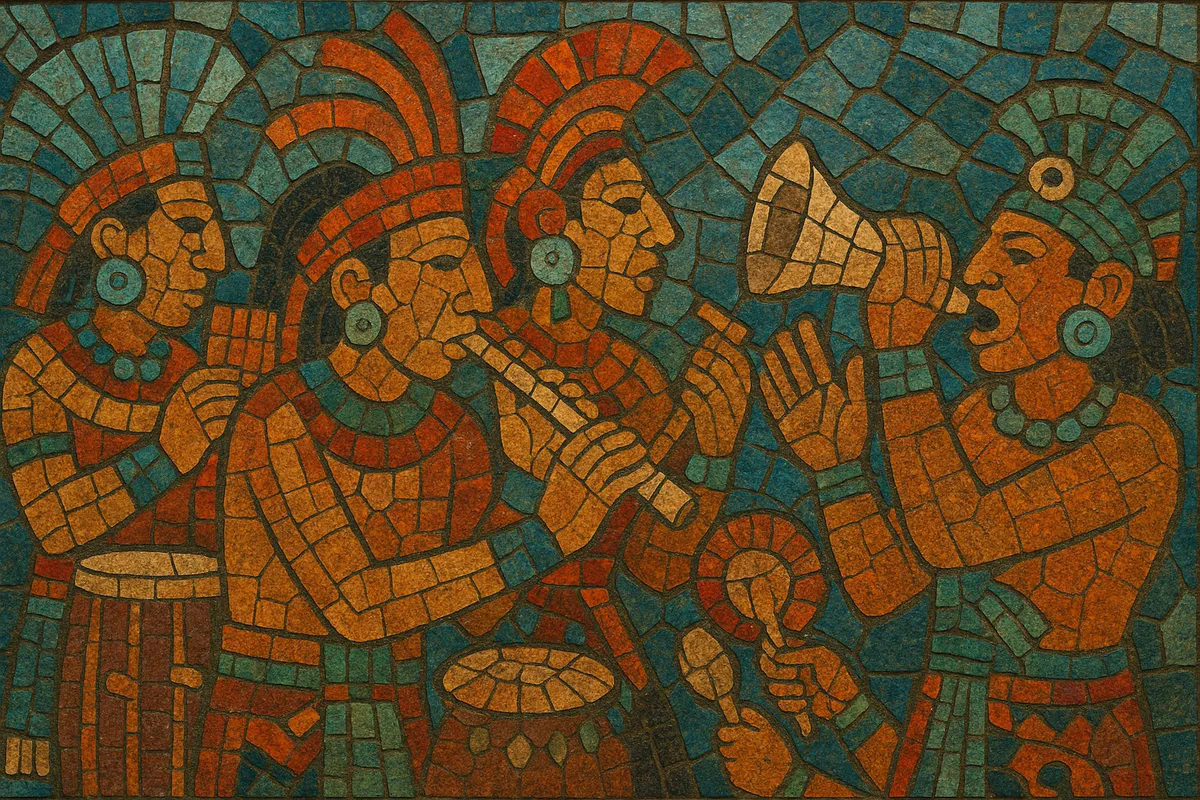Maya music refers to the musical practices of the Maya peoples of Mesoamerica, from pre‑Columbian ritual and courtly traditions to contemporary indigenous and syncretic forms. It is defined by membranophones and idiophones (slit drums/tunk'ul, kettledrums/pax, rattles, turtle shells), aerophones (end‑blown and duct flutes, ocarinas, and conch trumpets), and vocal practices ranging from chant to call‑and‑response.
Historically, music marked calendrical rites, royal ceremonies, warfare, and cosmological observances, and it often integrated dance, poetry, and theater. In the colonial and modern eras, Maya communities adopted and adapted marimba ensembles, hymnody, and popular idioms, creating a continuum that now also includes Mayan‑language singer‑songwriters and hip‑hop crews who address ancestry, land, and identity.
Archaeology, iconography, and surviving instruments show that music was central to Classic‑period Maya life. Courtly scenes depict large drums, slit drums (tunk'ul), rattles, flutes, ocarinas, and conch shells accompanying dance, procession, and ritual. Rhythmic ostinatos, responsorial song, and tightly coordinated drum–dance spectacles likely supported cosmological narratives and political legitimation.
After the 16th century, Catholic liturgical repertories and Iberian forms entered Maya regions. Indigenous communities fused European hymn tunes, procession rhythms, and local instruments with established ceremonial cycles. Over time, marimba ensembles—an instrument with African roots that took on regional identities in Guatemala and Chiapas—became a favored vehicle for communal dances and town festivals alongside older ritual soundscapes.
Marimba orquestas, brass bands, and civic ensembles brought indigenous and ladino repertoires into schools, plazas, and national theaters. Local cofradías and dance‑drama troupes preserved macehual (community) ceremonial sounds—drums, flutes, and conch—within saint days, agricultural rites, and masked dance‑dramas.
Since the late 20th century, cultural associations, archives, and artists have revitalized Maya instruments and repertories. A new wave of Mayan‑language singer‑songwriters and hip‑hop collectives foregrounds Kaqchikel, K’iche’, Tz’utujil, Tsotsil/Tseltal, and Yucatec Maya, addressing land, memory, and resistance while collaborating with marimba, traditional percussion, and global bass aesthetics.


